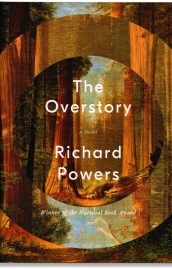Those Falling Giants

Manifestations of rampant deforestation are raging in every corner of the globe. Australia under fire, radiant Singapore regularly plunged in the thick smoke of Borneo and Sumatra, the Congo Basin whose forest cover has been severely amputated, or of course the more publicized Amazon whose indigenous peoples are demanding protection... Less well known is the fact that the boreal forests of Russia and Canada are also on alert.
The pace is frantic: every minute, more than 2,000 trees are being destroyed around the world. And the multiple services they provide us with. Their underestimated superpowers are being cut down or burned away. These carbon sinks are disappearing at high speed, and so are their regulatory functions, with major impacts on climate change. The colossal loss of biodiversity and the displacement of local communities are also a major concern.
The issue is now attracting international attention. The common heritage is being invoked through interference and diplomatic crises. One thing is clear: the tree has definitely invited itself to the heart of modern geopolitics.
Mega-fires proof carbon reserves
The transition to the new decade has been sadly tarnished by the massive fires that have ravaged much of Australia's forests. More than ten million hectares are now reduced to ashes, three times the size of Belgium. Almost inextinguishable are the mega-fires, a phenomenon of a new kind that is now a recurring occurrence on both sides of the globe. The conditions are increasingly favorable, even leading to the outbreak of tornado fires, these particularly destructive "firenadoes".
One determining factor is pointed out by scientists: global warming, which is lengthening the length of the fire season. For Australia in this case, prolonged drought and strong winds have turned the first sparks into a huge inferno. The IPCC underlines the central role of GHG emissions in this process: they are at the origin of the climatic upheavals that lead to the fires, but they are also the result of when forests go up in smoke, thus forming a real feedback loop. Scientists estimate that Australia will double its emissions this year with nearly 400 million tonnes of incremental CO2. In total, the European Copernicus program has observed more than 6,000 Gigatonnes of CO2 released from forest fires last year. An infernal cycle that must urgently be stopped by a voluntarist low carbon policy because, it must be remembered, after the oceans, forests are the second-largest carbon reservoir. Each year, they sequester 19 % of global anthropogenic emissions.
Particularly worrying, recent reports published in Nature Plants even show that certain forests and fragile tropical soils can thus become emitters of emissions rather than collectors. This phenomenon can be attributed to accidental fires but also to eminently preemptive uses that plunge forests into sad concerts of chainsaws or smoke from burning.
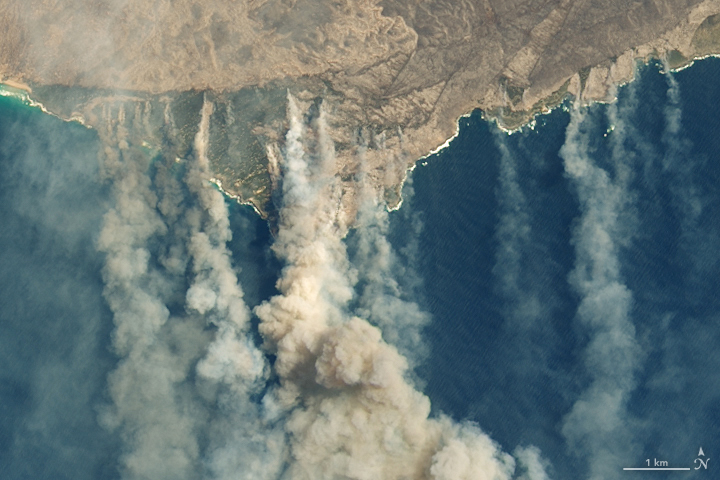
Fires ravaged nearly half of Kangaroo Island.
Extractive practices and land-use change
Deforestation is underpinned by two major issues: food security and access to energy.
The energy issue
Almost a third of the world's population uses wood as an energy source. Forests are especially the fuel of vulnerable populations. In the Congo Delta, the situation is more than alarming. The world's second greenest lung, the forest is being hit hard by deforestation. According to Global Forest Watch, the Democratic Republic of the Congo has almost doubled its rate of primary forest loss since 2010 and is now sadly the second-highest losing nation per year, just behind Brazil. "It is estimated that the DRC's forest cover increased from 67 % to 54 % of the territory between 2003 and 2018," said Tosi Mpanu Mpanu, the DRC's ambassador and climate negotiator at the UN climate conferences. "The DRC has made an international commitment to stabilize its forest cover at 63.5 % of its territory (2.3 million km2). And we are losing that fight.
In this country where the population mainly relies on wood as an energy source, a real energy transition is necessary because only 8 % of the inhabitants have access to electricity and only 1 % in rural areas. "Given that more than 90 % of the energy consumed in the DRC comes from wood, the lack of progress in providing clean and renewable energy is a direct threat to our forests," said last August the President of the Democratic Republic of Congo, Felix Tshisekedi. "At the current rate of population growth and our energy needs, our forests are threatened with disappearance by 2100," he warned, aiming to develop the country's immense hydroelectric potential.
Food security at stake
According to projections, the world's population is expected to reach around 10 billion people in 2050, and the FAO estimates in its latest State of the World's Forests report that food demand will double over this period. However, the main cause of widespread deforestation is agro-industrial demand. According to Rhett A. Butler (Mongabay), livestock farming accounts for 65-70 % of deforestation in the Amazon, followed by agriculture (including small subsistence and commercial farms), mainly soybean production, which occupies 25-30 % of deforested land.
The Intergovernmental Platform on Biodiversity and Ecosystem Services (IPBES) notes that 50 % of agricultural expansion has been at the expense of forests, leading to rapid loss or degradation of natural habitats that are particularly damaging. While the IPBES notes that "more than a third of the world's land surface and nearly 75 % of freshwater resources are now devoted to crop or livestock production", it now seems crucial to think about increased food production with more efficient models and therefore without reducing forest cover. There is a real challenge here in terms of food security and competition for land, with the majority of current deforestation clearly attributed to the conversion of forest land into cropland and livestock areas mainly for export.
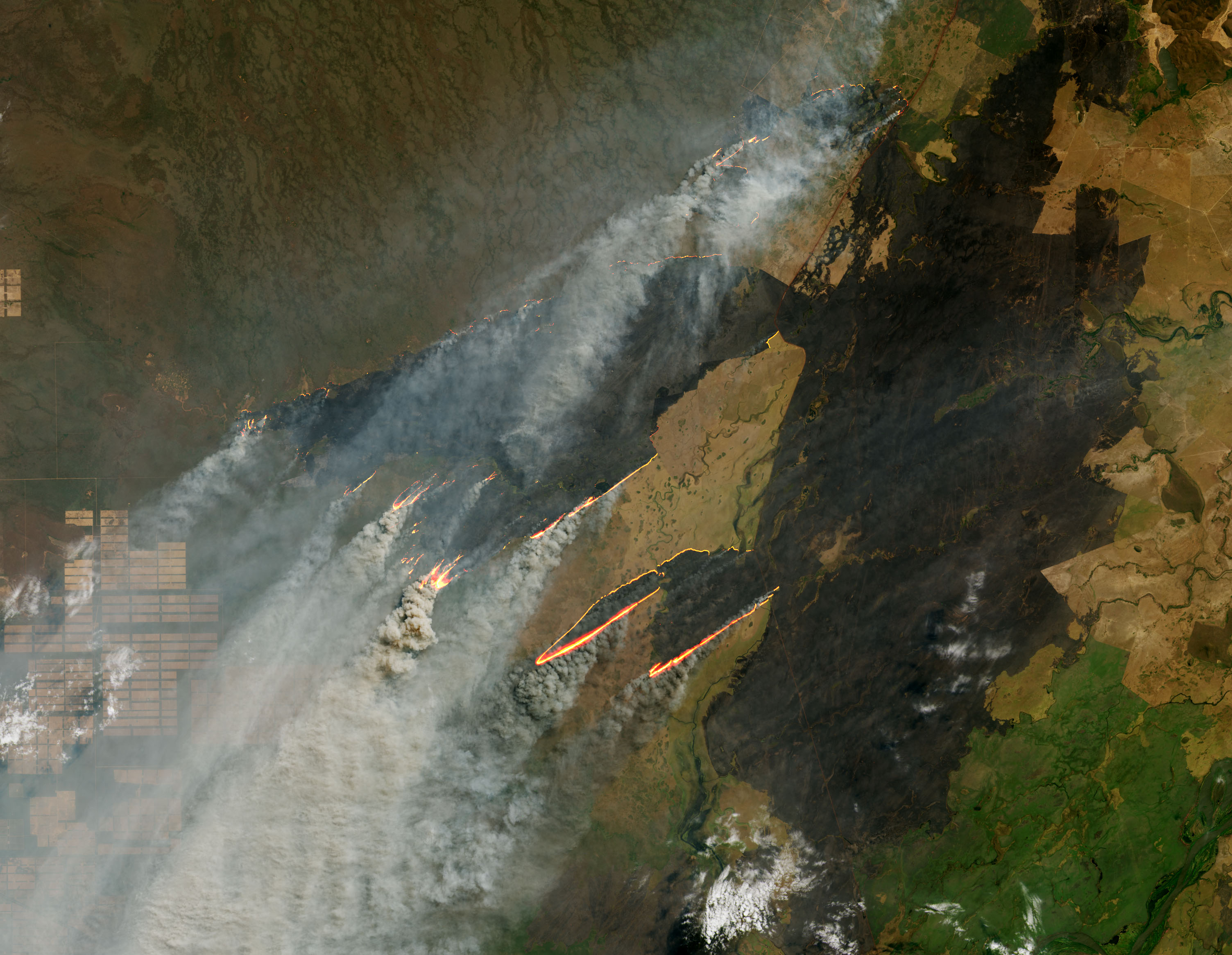
On the borders of Brazil, Bolivia and Paraguay. In brown, the burnt territories will give way to crop and livestock areas.
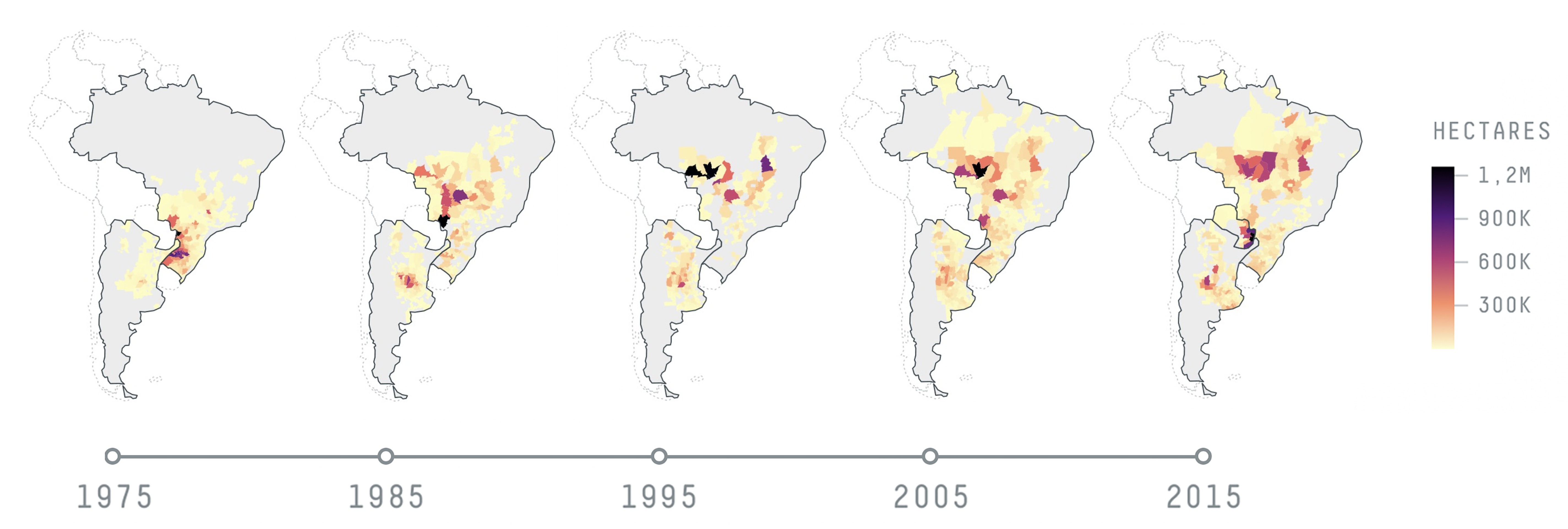
Soy expansion in Brazil, Argentina and Paraguay.
Our consumption patterns at stake
At the heart of deforestation are the products listed on the shelves of our supermarkets. Cereals, meat, paper, avocados, palm oil... Hence the need to raise awareness and involve citizens and private actors in policies to preserve forest ecosystems. Organizations such as TRASE (Transparent Supply Chains for Sustainable Economies) provide companies with the information they need to understand the impacts of their supply chains on forests. Soybean cultivation is particularly revealing of the changing situation, being one of the major causes of land-use change in Brazil. The latest TRASE report shows that, together with Argentina and Paraguay, Brazil grows almost 50 % of the world's soybeans, compared to 3 % 50 years ago. Over this period, the area dedicated to soybean production has increased 40-fold and is now the size of Spain. This strong demand is supported in particular by the European market, but mainly by China, whose imports of Brazilian soybeans have risen by 300 % over the last 10 years. On the other side of the globe, in Indonesia, palm oil and paper exports are also booming. Despite a more restrictive government policy in this area, according to Global Forest Watch, Indonesia has lost 25.6 million hectares of forest area since 2000, a 16 % reduction in forest cover corresponding to 10.5G tons of CO2 emissions. In addition to the destruction of forests, peat bog fires, which are high emitters of greenhouse gases and toxic particles, have also been added to the destruction of forests. In 2019 again, from Kuala Lumpur to Kuching, the region was blinded by these intense fumes. Each time, the 2015 scenario is feared. More than one hundred thousand premature deaths were then attributed to these fires in the area, according to a study by the American universities Harvard and Columbia.

Consequences are spread beyond borders. Peat fires emit gases and particles in large quantities, including carbon dioxide, methande and fine particles.
Vulnerable populations
With deforestation, it is the multiple services provided by the forest to the most vulnerable populations that disappear. The change in land use leads to a major loss of resources and income for local populations. As FAO points out, 40 % of the rural populations in extreme poverty, i.e. 250 million people, live in forest or savannah environments; and forests now account for about 20 % of rural household incomes in developing countries.
The consequences for local populations are manifold: the disappearance of wildlife, impoverishment of the soil, increased flooding, etc. Another major concern is the decrease in drinking water reserves. Three-quarters of this precious resource comes from forested watersheds, yet about 40 % have lost more than half of their forest cover. Trees, as we know, play a key role in the water cycle, allowing its retention, its regulation by evapotranspiration but also its filtration. The challenge for forests is therefore also that of access to this essential resource that is drinking water.
Forests with fire but also with blood
Among the local populations, voices are being raised against this massive exploitation, but the illegal loggers and traffickers do not hesitate to use the hard way to cut them down. The Human Rights Watch report of last September denounced the existence in Brazil of real "Mafias of the tropical forest". In the context of a lax policy towards deforestation, the criminal networks that are on the rise are using "violence and intimidation against those who stand in their way". According to the Pastoral Land Commission (CPT), the number of killings related to the use of tropical forest land and resources in the country has risen to more than 300 in the last ten years.
These incredible sanctuaries of biodiversity
According to the latest IPBES report published in April 2019, around 1 million animal and plant species are now threatened with extinction, a phenomenon described as "unprecedented and accelerating". Unsurprisingly, deforestation is pointed out as one of the determining factors in this process, as forests are home to 80 % of the world's biodiversity. This loss or deterioration of natural habitats is increasingly worrying because it signals the extinction of a set of ecosystems essential to the functioning of our societies. Professor Stéphane Mancuso, recalls the benefits in his latest book The Plant Revolution: "more than 31,000 different species have a wellestablished use; among them, about 18,000 are exploited for medical purposes, 6,000 for our food, 11,000 as textile fibers and building materials... The count is quickly done: one-tenth of them are used directly by humanity.”
Particular attention is paid to the tropical forests, which are extremely rich in fauna and flora. The Amazon in particular, and it is no coincidence that it is highly publicized, is a treasure trove of biodiversity. Rhett A. Butler estimates that the Amazon contains about 30 % of the world's species; he reminds us that more than 500 species of trees can be found on a single hectare and that a single bush in this humid tropical environment can harbor more species of ants than the whole of the British Isles.
Until very recently, the toll of the Australian fires has been extremely heavy for the fauna and flora because, as the World Resources Institute points out, 40 % of the burnt territories were in protected areas and the many endemic species they contained were affected. The emblematic koalas and kangaroos fleeing the flames are still in the minds of many. With them, more than a billion animals are thought to have disappeared.
On average, a 5m3 tree can absorb the equivalent of 5 tonnes of CO2, i.e. 5 round trips from Paris to New York and back.
(source: ONF)
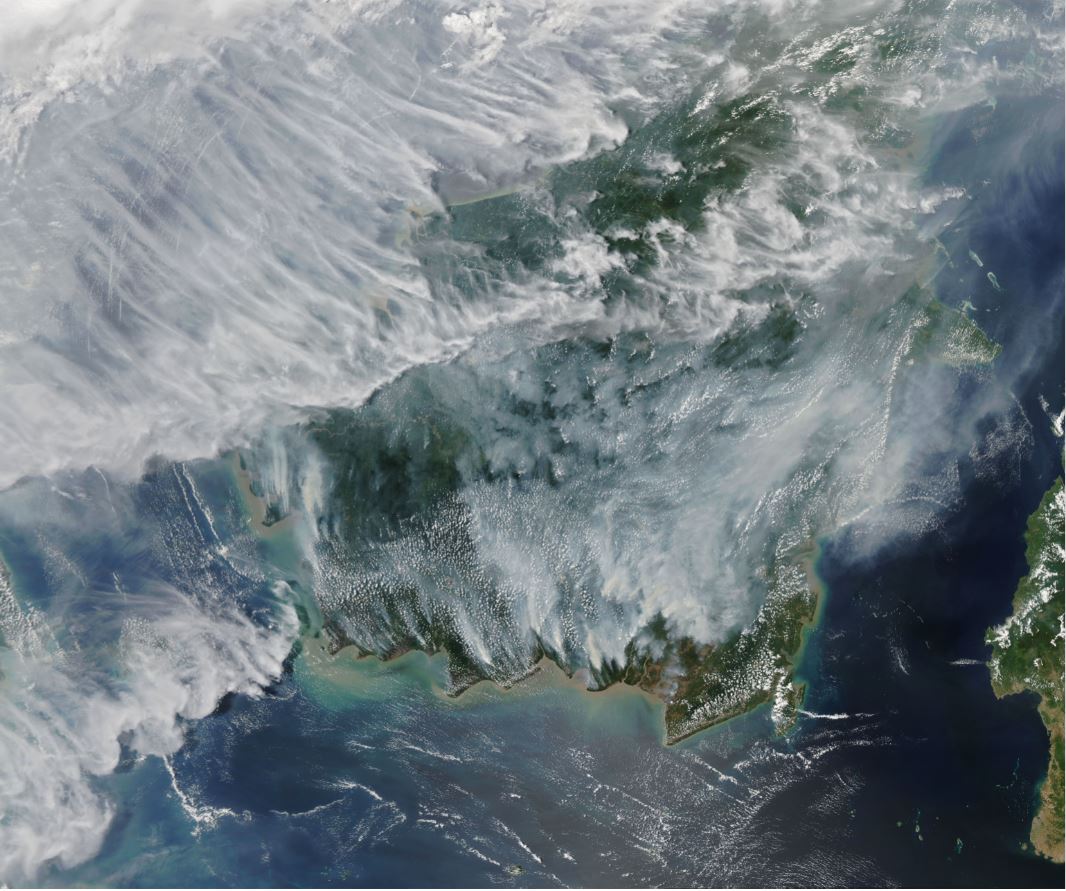
Toxic fumes from forest and peat fires in Sumatra and Borneo have plunged large parts of Southeast Asia into the fog in 2019.
A public good?
Biodiversity, carbon sinks, freshwater reserves, and much more make woodlands a treasure for humanity. "Forests are a source of food, medicine, and fuel for more than a billion people," says FAO. The stakes involved go far beyond borders and clearly involve some particularly short-sighted private economic interests, calling into question the very notion of ownership. The consequences of deforestation are certainly global, but so are the causalities and responsibilities. Hence, the need to address the subject in its entirety on a supranational scale.
Expectations are particularly high with regard to the COP 15 of the Convention on Biological Diversity, to be held in Kunming in October this year, which will see the adoption of a new global framework for biodiversity governance after 2020. However, this is only one of the major issues at stake in the issue of forest areas and the absence of a dedicated binding international treaty is deplorable.
The idea of considering forests as a global commons is now gaining ground. An approach that requires the involvement of different stakeholders, new spaces for dialogue and decisions. These properties would fall within the scope of world heritage and would, therefore benefit from a specific legal status and be placed under the protection of the international community, with neutral and at least multilateral modes of governance and control.
However, the discussions stumbled on a recurring stumbling block: many countries that "own" these wooded areas do not intend to give up part of their sovereignty over their territories. However, it is this principle of supranational governance that is now applied in Europe on so-called "sites of community interest". The European Union is the guarantor of this common good thanks to an adapted legal arsenal and does not hesitate to sanction if necessary. The 1992 directive on the conservation of natural habitats is the backbone of this directive and makes it possible to protect more than a thousand species of animals and plants as well as 200 types of habitats through the Natura 2000 network. On 25 July this year, the European Commission, therefore, decided to refer Greece to the Court of Justice for failure to adequately protect natural habitats and species.
This reveals a willingness on the part of the institutions to preserve the European Union's natural capital as a common good. This growing concern on Europe's agenda was further supported in July with the definition of a framework to restore and protect forests at a global level. In addition to enhanced cooperation or the development of responsible finance, the Union is also assessing possible new regulatory measures to minimize the impact of European consumption on deforestation and forest degradation. A mechanism to be put in place as a matter of urgency ...
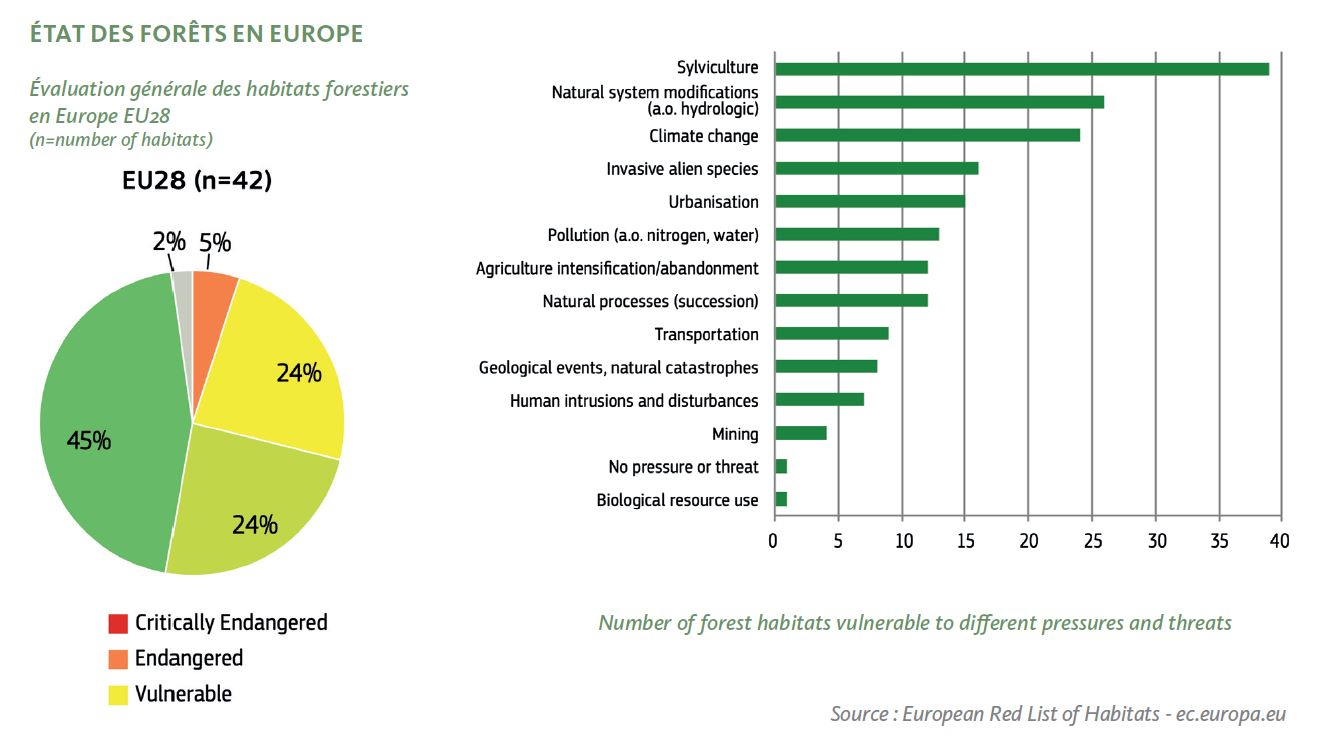
Replant, yes, but how?
A study by the Zurich University of Applied Sciences, conducted in February 2019 by British researcher Thomas Crowther, estimates that 1,200 billion trees could be added to existing forests, which he believes would largely absorb global emissions. So are we heading towards a zero-sum game or even a positive impact game?
Some people are now moving in this direction, but accounting is not that simple. The "one tree planted for one tree gone" is a facility of the mind. Not all species absorb the same amount of CO2. Because some trees dry out the soil. Because a very young seedling is not a great subject for many of the services it provides. Because monoculture tree rows do not promote as much biodiversity. Moreover, replanting with such characteristic linear geometries is risky, because we know that forests are more resilient when they are plural.
The question is no longer whether or not to replant, but where and how? Companies and brands that subscribe to a principle of offsetting their emissions through planting must approach the subject with caution because replanting what one has "consumed" on the one hand without having put in place an in-depth emissions reduction strategy is nonsense. Limiting emissions at source remains the top priority. A replanting policy must be part of a solid sustainable development plan for the company at all levels. Then, to conduct such a reforestation program, it is important to surround oneself with experts in connection with the local community to ensure that the plantations are adapted and do not take away agricultural land.
One of the approaches encouraged by the IPCC is agroforestry, where trees are planted to complement crops. This approach proves to be beneficial for everyone because the harvests are much more fruitful. According to Tristan Lecomte, the founder of the PUR Project, who has already planted more than10 million trees, agroforestry cocoa plots produce two tons per hectare, which is on average five times more than farms that use chemical fertilizers and pesticides.
As the philosopher Joëlle Zask, author of Quand la forêt brûle: pense la nouvelle catastrophe écologique (When the forest burns: think of the new ecological disaster) points out, it is now important to revisit our relationship with the forest by understanding the plurality of representations and anthropic uses it has made of it. Neither to approach it in an ultra-extractivist dominating approach nor to put it too far away in an idealized vision. It is a matter of giving it our attention and interacting with it in a positive way, giving it the necessary care, so that it can continue to deliver its benefits to us. In short, an invitation to be "neither master nor spectator".
Awareness is growing, initiatives are multiplying
For negative CO2 clicks
ECOSIA, the Berlin-based search engine, already has more than 70 million trees planted on its balance sheet. The goal set by its founder Christian Kroll? To reach one billion by 2020.
One item purchased = one tree planted
This is the principle of the FAGUO ready-to-wear brand. And since its creation 9 years ago, 1.4 million trees have been planted in 200 French forests.
The biggest fundraiser ever organized on Youtube
Goal achieved in 55 days. 20 million trees will be replanted thanks to Mr. Beast's #Teamtrees campaign and his incredible network. The National Arbor Day Foundation, an NGO, will be responsible for ensuring that the principles of sustainable replanting are respected.
Forests account for 27 % of land area
1.3 million km2 disappeared between 1990 and 2016, or about 800 football fields per hour
They contribute to the livelihoods of about 25 percent of the world's population
of rural household income in developing countries comes from forests
of biodiversity is found in forests
Greenhouse gas emissions linked to deforestation are the 2nd cause of global warming (after fossil fuels), accounting for 12 % of emissions (more than the transport sector)
(SOURCES: CE, FAO)
Also to be read in the dossier "The Hindered Power of Trees":
